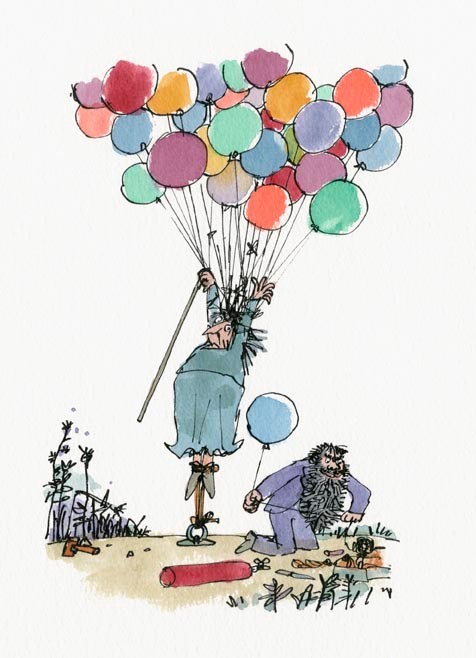by Selah Bell
This week, I downloaded a copy of George MacDonald’s book Phantastes. I don’t always read prefaces but this one was very short so I read it and found that in listing the reasons for this specific edition, George MacDonald’s son Greville MacDonald had written the following, “The first is to rescue the work from an edition illustrated without the author’s sanction, and so unsuitably that all lovers of the book must have experienced some real grief in turning its pages.”
First of all, what an absolutely savage roast. In all seriousness, though, why are we so attached to the way we picture fictional characters and events?
Let’s say someone you’ve known and loved for all your life goes to sleep one night and mysteriously wakes up looking like Queen Elizabeth I. They have no idea how this strange occurrence happened, and after they manage to convince you that they’re the same person, you still love them, but it’s a little weird. When we grow accustomed to picturing one thing and find that the thing is not only missing but has been replaced with something else
There’s another aspect to how illustrations fit (or don’t) into certain books. I can’t imagine cracking open Roald Dahl’s Matilda and seeing it illustrated in the style Pauline Baynes used for The Chronicles of Narnia, and it’s not because of familiarity. Illustrations are like highlighters: A bad highlighter smudges the words on a page while a good one simply gives the words a splash of color that emphasizes what already exists. In the case of illustrations, this emphasis isn’t limited to the faithful depiction of a story, but the style that is used.
Books wherein children shrink themselves through television or hide parrots in their chimneys to convince a family their house is haunted deserve unorthodox illustrations. Quentin Blake, Roald Dahl’s illustrator, gave us illustrations that emphasize Dahl’s delightful (if also grim) writing style. Through his use of exaggerated and rough lines, he mirrored the exaggerated world and style of Dahl himself.

Likewise, Pauline Baynes' illustrations for The Chronicles of Narnia depict a fairytale-esque world where everything is a combination of the picturesque and fantastical. Her soft, neat lines and soft colors display the goodness of Narnia and its characters.
I used these authors and illustrators as an example, not only because their works are so stylistically different, but also because their books are in novel format. Both authors described their characters with words instead of relying on consistent illustrations.
In picture books like Skippyjon Jones or The Giving Tree, illustrations play just as big of a role as the actual text. Words are used sparingly, and most of the story’s emotion is conveyed through a visual medium.
When pictures are half the story and half of its style, it's difficult for them to feel out of place. For illustrations to really work in novel format, they don’t just need to match the physical description, but the mood and style of the story that’s being told as well.
We all recognize the power of a good visual. A PowerPoint with no pictures is begging the audience to let their minds wander, and brands without a consistent style inspire confusion as to what their advertisers were thinking. Similarly, illustrations hold the power to engage and ignite an audience’s imagination, to take a wonderful story and make the experience of reading it even more wonderful. Perhaps then, bad illustrations are only so bad because they could have been great.
This is a topic we love here at Bandersnatch Books. Our CEO, Carolyn Clare Givens, contributed an essay to the Square Halo collection Wild Things and Castles in the Sky on the role illustrations play in middle grade novels and reading development. We highly recommend that book if you’re looking for guidance in book selection. Several of Bandersnatch’s middle grade novels are illustrated, including The King’s Messenger, Zao’s Tales, Red Rex, and the upcoming Joe the Fourth and the King’s Crown.
July 18–20, 2025 - Bandersnatch at the Realm Makers Expo in Grand Rapids, Michigan. Learn more
August 29–September 1, 2025 - Bandersnatch at Matthews Alive Festival in Matthews, North Carolina. Learn more.
September 24, 2025 - Release of The Song of the Stone Tiger, a middle grade fantasy novel by Glenn McCarty
November 2025 - Release of Joe the Fourth and the King’s Crown, a lower middle-grade novel by Mary Barrows
November 2025 - Release of I’ve Got a Bad Case of Poetry, our illustrated children’s poetry anthology edited by Rachel S. Donahue - Preorder on the Kickstarter Platform
Help Us Support the 21st Century Packhorse Librarians!
During the Great Depression, a group of women saddled up their horses and delivered books through the Appalachian Mountains. In the aftermath of Hurricane Helene, Kirsten Turner is leading a group bringing books back to Appalachia, 21st-Century Style. You can learn more about the project in this article!
We hope to continue to provide books to the Packhorse Librarians, and we need your help! Here’s how:
Order any books from our website using code PACKHORSE for 40% off.
If you’d like to help us with shipping costs, that’s all you need to do. If you can’t help with shipping, you can also add code PACKSHIP for free shipping.
We’ll package up all the books you order and ship them to the Packhorse Librarians in batches or take them when we volunteer at an event.
You can fill in our address for the shipping address: P.O. Box 2473, Indian Trail, NC 28079
*Any orders using these codes will be sent to the Packhorse Librarians for Western North Carolina.
Katherine Ladny Mitchell’s Not to Be made its way out into the world this week and there’s still time to make it your summer reading! Click through to the post above to read an interview with the author!
Also please follow Bandersnatch Books on Instagram or Facebook!










